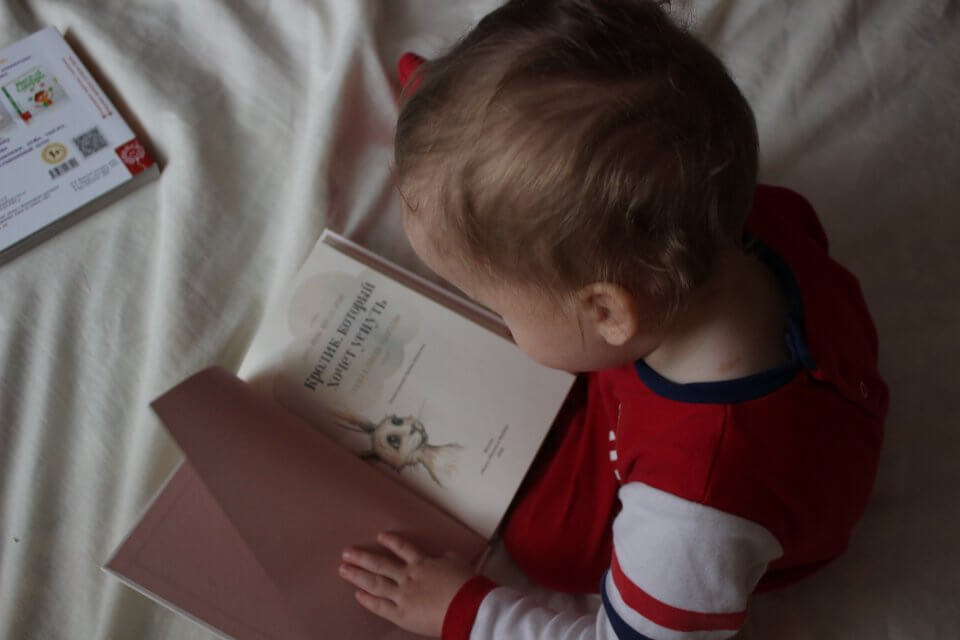Summer Camp 2025 Registration is Open – click here to register now!
Kids & Company Blog
Navigating Toddlerhood
Toddlers are born boundary-pushers, not that this is a bad thing! It is a part of their natural development and the way they learn. Although this is true, they LOVE structure and routine. They love being able to predict what comes next and to take part in decision making. When their routine shifts or isn’t in place at all, they can easily become uncomfortable in the situation and challenge you more consistently. We want to give you a glimpse of what is going on developmentally and tips on how to survive this exciting age!

Toddlers love to make decisions, so allow them to! This allows them to hold onto some power in their lives. Keep your routines the same but offer a few choices during the routine. Pyjamas, pick between two pairs, offer two types of toothpaste or pick 2 books out of 4 for them to read with you all while keeping in mind that we don’t want to overwhelm them with too many choices.
Create a schedule that works for you and your family. Whether your toddler is on a one nap schedule or has dropped naps altogether, hold that schedule sacred. Try to have nap and bedtime at the same time each day. Why is important at this age? Toddlers like to be able to predict what comes next. Having a consistent schedule helps your child to be able to do just that!

Choose an early bedtime. Toddlers do not know how to regulate their emotions to begin with, if you factor in an OVERTIRED toddler then you are increasing your chances of experiencing meltdowns, tantrums and tears. Instead of having your 2–3-year-old stay up until 8-8:30 PM, try a 7:00 PM bedtime. You might see them fall asleep quicker, stay in bed throughout the night and avoid those 5:30 AM wake-ups. You may experience fewer nightmares or night terrors as well. If your toddler is having a hard time settling down at an earlier bedtime it may be time to cap or drop that nap and have quiet time instead.

What does quiet time look like? Toddlers can become easily overwhelmed by too much stimulation. It is important to have a set time for our children to just chill. Reset by reading a few books in bed, singing to themselves, play with their favourite stuffy or even colour (IF you trust them alone in their room with marker or crayons). During quiet time it is important that it is just that and nothing too stimulating like tv, tablets or gaming on some sort of device.
Why do we want to schedule specific times for screen time? The light from the screen can alter our body's natural biological clock. If our body is absorbing blue/white light too close to bedtime our natural melatonin production will be suppressed, causing difficulty falling asleep, staying asleep and oftentimes, night terrors. We all turn to these devices for help throughout the day. To get in that morning coffee, send that last email or get supper in the oven. I GET IT, BELIEVE ME. What we need to do is just be aware of the amount of screen time and when it occurs. End screen time 40 minutes-1 hr before sleep. Have these devices on a timer and giving your toddler a warning that time is getting close to prevent meltdowns.
Developmentally, your toddler is far more advanced than they were even 6 months ago! When they are pushing our buttons, it is because they are curious and learning. Toddlers are experiencing cause and effect and it is developmentally appropriate for them to try to bend the rules. Having consistent nap and nighttime routines will help your child feel secure and safe. Honouring nap and bedtime, while allowing them to take part in decision making will lead to more compliance and less boundary-pushing during toddlerhood. Good luck!
Natalie Moran + Amber Monette
Your Certified WeeSleep Sleep Consultants
Natalie.moran@wee-sleep.com
Amber.monette@wee-sleep.com
Posted on: Thursday February 11th, 2021
Posted by: WeeSleep
Calgary
Calgary
Calgary
Calgary
Calgary
Edmonton
Cochrane
Red Deer
Calgary
Calgary
Okotoks
Calgary
Calgary
Calgary
Calgary
Edmonton
St. Albert
Edmonton
Edmonton
Edmonton
Edmonton
Edmonton
Edmonton
Edmonton
St. Albert
Edmonton
Edmonton
Sylvan Lake
Edmonton
Sherwood Park
Edmonton
Calgary
Edmonton
Calgary
Edmonton
Kamloops
Langley
Langley
New Westminster
North Vancouver
Richmond
Vancouver
Victoria
Victoria
Port Moody
Surrey
Surrey
Surrey
North Vancouver
Nanaimo
Surrey
Coquitlam
Burnaby
Port Coquitlam
Vancouver
Maple Ridge
Maple Ridge
Maple Ridge
Mission
Maple Ridge
Maple Ridge
Maple Ridge
Maple Ridge
Mission
Mission
Maple Ridge
Maple Ridge
Chicago
Chicago
Chicago
Chicago
Schaumburg
Chicago
Winnipeg
Abington
Canton
Quincy
West Quincy
Braintree
Braintree
Walpole
East Walpole
Brighton
Brookline
Jamaica Plain
Jamaica Plain
Cambridge
Needham
Newton Highlands
Newton
Cambridge
Boston
Randolph
Kingston
St. Peters
Lake St. Louis
Troy
O'Fallon
St. Charles
Lake St. Louis
St. Peters
O'Fallon
Howell Township
Freehold Township
Manalapan Township
Stratford
Marlton
West Deptford
Bedford
Dartmouth
Halifax
Bedford
Hammonds Plains
Lower Sackville
Eastern Passage
Avon Lake
Beachwood
Hudson
Medina
Strongsville
Cleveland
Westlake
Aurora
Burlington
Burlington
Etobicoke
Etobicoke
Hamilton
London
Milton
Mississauga
Ottawa
Richmond Hill - Corporate office (No child care services)
Toronto
Toronto
Toronto
Toronto
Toronto
Waterloo
Kanata
Oakville
Oakville
Toronto
Whitby
Toronto
Mississauga
Ottawa
Toronto
Toronto
Toronto
Brampton
Stoney Creek
Toronto
Nepean
Burlington
Burlington
Oakville
Waterdown
Oakville
Pittston
Wilkes-Barre
Exeter
Old Forge
Dover
Harrisburg
Harrisburg
Harrisburg
Hummelstown
Palmyra
York
York
York
Sweet Kiddles Avon Lake, part of the Kids & Company Family
Abington
Aurora
Sweet Kiddles Beachwood, part of the Kids & Company Family
Bedford (Dellridge Lane)
Larry Uteck (Southgate Dr)
Pine Village South End, by Kids & Company
Braintree 1
Braintree 2
Brampton
Pine Village Brighton, by Kids & Company
Pine Village Brookline, by Kids & Company
Burlington Children’s Centre
Burloak
Appleby
Beacon Hill
Brightstart Burnaby, by Kids & Company
Bow Trail
Livingston
Midlake
Millrise
Royal Oak
Britannia Crossing
Marda Loop
Evanston
Beltline
Aviation Crossing
Gulf Canada Square
Royal Oak Out of School Care and Child Care
Glendeer: New – Open for Enrollment
Pine Village Kendall Square, by Kids & Company
Pine Village Porter Square, by Kids & Company
Canton
Jackson
Lincoln Park
Harrison
West Loop
Fulton
Sweet Kiddles University Circle, part of the Kids & Company Family
Cochrane
Brightstart Coquitlam, by Kids & Company
Dartmouth
Dover
Walpole North
Eastern Passage
Ellerslie
Edmonton Ice District
Baturyn
Diamond
Friendly Frog
Meadowlark Park
St. Charles
St. Dominic
Sunshine Factory
Tamarack
Jagare Ridge
Horse Hill
Fraser
Century Park: New – Open for Enrollment
Grandview Heights: New – Open for Enrollment
Islington
Etobicoke (Bloor & Islington)
ABC Kiddie Kampus Exeter, by Kids & Company
Apple Hill Academy Freehold by Kids & Company
Halifax
Hamilton
Hammonds Plains
Route 39
Schaffner
Swatara
Apple Hill Academy Howell by Kids & Company
Sweet Kiddles Hudson, part of the Kids & Company Family
Hummelstown
Pine Village JP Revere, by Kids & Company
Pine Village JP South Street, by Kids & Company
Kamloops
Eagleson (South Kanata)
Crayon College, by Kids & Company
Tyke Town Lake St. Louis, by Kids & Company
ABC Lake St. Louis, by Kids & Company
Kids World
Langley (200th St.)
London Richmond
Sackville
Apple Hill Academy Manalapan by Kids & Company
119 Avenue, Part of the Kids & Company Family
Dewdney House (Infant/Toddler and 3-5), Part of the Kids & Company Family
Dewdney Church (Preschool/OSC/3-5), Part of the Kids & Company Family
Edge, Part of the Kids & Company Family
Webster’s Corner, Part of the Kids & Company Family
Harry Hooge, Part of the Kids & Company Family
Alouette, Part of the Kids & Company Family
Silver Valley, Part of the Kids & Company Family
Whonnock, Part of the Kids & Company Family
Under The Sun Marlton, part of the Kids & Company Family
Sweet Kiddles Medina, part of the Kids & Company Family
Milton
Lougheed, Part of the Kids & Company Family
Stave Falls, Part of the Kids & Company Family
Briskham, Part of the Kids & Company Family
Robert Speck Parkway
Mississauga Gateway Centre
Nanaimo
Pine Village Needham, by Kids & Company
Ottawa Barrhaven
New Westminster
Pine Village West Newton, by Kids & Company
Pine Village Newton Highlands, by Kids & Company
North Vancouver
North Van Esplanade
O’Fallon South
ABC O’Fallon, by Kids & Company
Oakville Cornwall
Oakville Dundas
Joshua Creek
Oakville West (3471 Wyecroft Rd)
Okotoks
ABC Kiddie Kampus Old Forge, by Kids & Company
Ottawa Albert
Ottawa Westboro
Palmyra
ABC Kiddie Kampus Pittston, by Kids & Company
Brightstart Port Coquitlam, by Kids & Company
Port Moody
Marina Bay
Randolph
Red Deer
Richmond
Head Office
Schaumburg
Sherwood Park
St. Albert North
St. Albert Grandin
ABC St. Charles, by Kids & Company
Tyke Town St. Peters, by Kids & Company
ABC St. Peters, by Kids & Company
Stoney Creek
Under The Sun Stratford, part of the Kids & Company Family
Sweet Kiddles Strongsville, part of the Kids & Company Family
Morgan Crossing
Surrey Professional Centre
King George
Brightstart Cloverdale, by Kids & Company
Sylvan Lake
Bloor Christie
Bloor (Bloor St. East)
Consumers
Finch
Front
Scotia Plaza
Stockyards
St. Andrew’s Church
Liberty Village
Rosedale
Queen West
Tyke Town Troy, by Kids & Company
Vancouver West
Cambie
Langford
Victoria
Walpole South
Waterdown
Tech Town
Under The Sun West Deptford, part of the Kids & Company Family
West Quincy
Sweet Kiddles Westlake, part of the Kids & Company Family
Whitby
ABC Kiddie Kampus East Mountain, by Kids & Company
Winnipeg
West York
Queen Street
Keystone Early Learning Academy, part of the Kids & Company Family
Calgary
Calgary
Calgary
Calgary
Calgary
Edmonton
Cochrane
Red Deer
Calgary
Calgary
Okotoks
Calgary
Calgary
Calgary
Calgary
Edmonton
St. Albert
Edmonton
Edmonton
Edmonton
Edmonton
Edmonton
Edmonton
Edmonton
St. Albert
Edmonton
Edmonton
Sylvan Lake
Edmonton
Sherwood Park
Edmonton
Calgary
Edmonton
Calgary
Edmonton
Kamloops
Langley
Langley
New Westminster
North Vancouver
Richmond
Vancouver
Victoria
Victoria
Port Moody
Surrey
Surrey
Surrey
North Vancouver
Nanaimo
Surrey
Coquitlam
Burnaby
Port Coquitlam
Vancouver
Maple Ridge
Maple Ridge
Maple Ridge
Mission
Maple Ridge
Maple Ridge
Maple Ridge
Maple Ridge
Mission
Mission
Maple Ridge
Maple Ridge
Chicago
Chicago
Chicago
Chicago
Schaumburg
Chicago
Winnipeg
Abington
Canton
Quincy
West Quincy
Braintree
Braintree
Walpole
East Walpole
Brighton
Brookline
Jamaica Plain
Jamaica Plain
Cambridge
Needham
Newton Highlands
Newton
Cambridge
Boston
Randolph
Kingston
St. Peters
Lake St. Louis
Troy
O'Fallon
St. Charles
Lake St. Louis
St. Peters
O'Fallon
Howell Township
Freehold Township
Manalapan Township
Stratford
Marlton
West Deptford
Bedford
Dartmouth
Halifax
Bedford
Hammonds Plains
Lower Sackville
Eastern Passage
Avon Lake
Beachwood
Hudson
Medina
Strongsville
Cleveland
Westlake
Aurora
Burlington
Burlington
Etobicoke
Etobicoke
Hamilton
London
Milton
Mississauga
Ottawa
Richmond Hill - Corporate office (No child care services)
Toronto
Toronto
Toronto
Toronto
Toronto
Waterloo
Kanata
Oakville
Oakville
Toronto
Whitby
Toronto
Mississauga
Ottawa
Toronto
Toronto
Toronto
Brampton
Stoney Creek
Toronto
Nepean
Burlington
Burlington
Oakville
Waterdown
Oakville
Pittston
Wilkes-Barre
Exeter
Old Forge
Dover
Harrisburg
Harrisburg
Harrisburg
Hummelstown
Palmyra
York
York
York
Sweet Kiddles Avon Lake, part of the Kids & Company Family
Abington
Aurora
Sweet Kiddles Beachwood, part of the Kids & Company Family
Bedford (Dellridge Lane)
Larry Uteck (Southgate Dr)
Pine Village South End, by Kids & Company
Braintree 1
Braintree 2
Brampton
Pine Village Brighton, by Kids & Company
Pine Village Brookline, by Kids & Company
Burlington Children’s Centre
Burloak
Appleby
Beacon Hill
Brightstart Burnaby, by Kids & Company
Bow Trail
Livingston
Midlake
Millrise
Royal Oak
Britannia Crossing
Marda Loop
Evanston
Beltline
Aviation Crossing
Gulf Canada Square
Royal Oak Out of School Care and Child Care
Glendeer: New – Open for Enrollment
Pine Village Kendall Square, by Kids & Company
Pine Village Porter Square, by Kids & Company
Canton
Jackson
Lincoln Park
Harrison
West Loop
Fulton
Sweet Kiddles University Circle, part of the Kids & Company Family
Cochrane
Brightstart Coquitlam, by Kids & Company
Dartmouth
Dover
Walpole North
Eastern Passage
Ellerslie
Edmonton Ice District
Baturyn
Diamond
Friendly Frog
Meadowlark Park
St. Charles
St. Dominic
Sunshine Factory
Tamarack
Jagare Ridge
Horse Hill
Fraser
Century Park: New – Open for Enrollment
Grandview Heights: New – Open for Enrollment
Islington
Etobicoke (Bloor & Islington)
ABC Kiddie Kampus Exeter, by Kids & Company
Apple Hill Academy Freehold by Kids & Company
Halifax
Hamilton
Hammonds Plains
Route 39
Schaffner
Swatara
Apple Hill Academy Howell by Kids & Company
Sweet Kiddles Hudson, part of the Kids & Company Family
Hummelstown
Pine Village JP Revere, by Kids & Company
Pine Village JP South Street, by Kids & Company
Kamloops
Eagleson (South Kanata)
Crayon College, by Kids & Company
Tyke Town Lake St. Louis, by Kids & Company
ABC Lake St. Louis, by Kids & Company
Kids World
Langley (200th St.)
London Richmond
Sackville
Apple Hill Academy Manalapan by Kids & Company
119 Avenue, Part of the Kids & Company Family
Dewdney House (Infant/Toddler and 3-5), Part of the Kids & Company Family
Dewdney Church (Preschool/OSC/3-5), Part of the Kids & Company Family
Edge, Part of the Kids & Company Family
Webster’s Corner, Part of the Kids & Company Family
Harry Hooge, Part of the Kids & Company Family
Alouette, Part of the Kids & Company Family
Silver Valley, Part of the Kids & Company Family
Whonnock, Part of the Kids & Company Family
Under The Sun Marlton, part of the Kids & Company Family
Sweet Kiddles Medina, part of the Kids & Company Family
Milton
Lougheed, Part of the Kids & Company Family
Stave Falls, Part of the Kids & Company Family
Briskham, Part of the Kids & Company Family
Robert Speck Parkway
Mississauga Gateway Centre
Nanaimo
Pine Village Needham, by Kids & Company
Ottawa Barrhaven
New Westminster
Pine Village West Newton, by Kids & Company
Pine Village Newton Highlands, by Kids & Company
North Vancouver
North Van Esplanade
O’Fallon South
ABC O’Fallon, by Kids & Company
Oakville Cornwall
Oakville Dundas
Joshua Creek
Oakville West (3471 Wyecroft Rd)
Okotoks
ABC Kiddie Kampus Old Forge, by Kids & Company
Ottawa Albert
Ottawa Westboro
Palmyra
ABC Kiddie Kampus Pittston, by Kids & Company
Brightstart Port Coquitlam, by Kids & Company
Port Moody
Marina Bay
Randolph
Red Deer
Richmond
Head Office
Schaumburg
Sherwood Park
St. Albert North
St. Albert Grandin
ABC St. Charles, by Kids & Company
Tyke Town St. Peters, by Kids & Company
ABC St. Peters, by Kids & Company
Stoney Creek
Under The Sun Stratford, part of the Kids & Company Family
Sweet Kiddles Strongsville, part of the Kids & Company Family
Morgan Crossing
Surrey Professional Centre
King George
Brightstart Cloverdale, by Kids & Company
Sylvan Lake
Bloor Christie
Bloor (Bloor St. East)
Consumers
Finch
Front
Scotia Plaza
Stockyards
St. Andrew’s Church
Liberty Village
Rosedale
Queen West
Tyke Town Troy, by Kids & Company
Vancouver West
Cambie
Langford
Victoria
Walpole South
Waterdown
Tech Town
Under The Sun West Deptford, part of the Kids & Company Family
West Quincy
Sweet Kiddles Westlake, part of the Kids & Company Family
Whitby
ABC Kiddie Kampus East Mountain, by Kids & Company
Winnipeg
West York
Queen Street
Keystone Early Learning Academy, part of the Kids & Company Family




